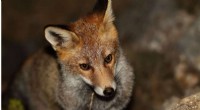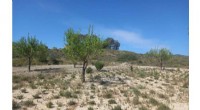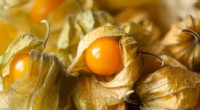
Wetenschap
Wat leerden we nog over hoe bomen groeien
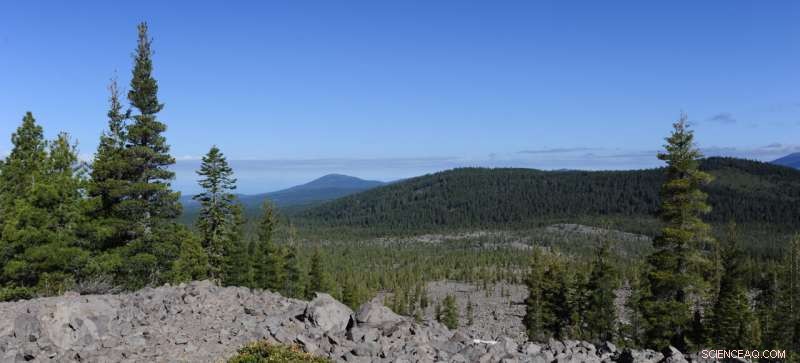
Een naaldbos in Noord-Californië. Krediet:Antoine Cabon
Wat gebeurt er met de bossen van de wereld in een opwarmende wereld? Zal verhoogde atmosferische koolstofdioxide bomen helpen groeien? Of zullen extreme temperaturen en neerslag de groei tegenhouden? Dat hangt er allemaal van af of de groei van bomen meer wordt beperkt door de hoeveelheid fotosynthese of door de omgevingsomstandigheden die de groei van boomcellen beïnvloeden - een fundamentele vraag in de boombiologie, en een vraag waarvoor het antwoord tot nu toe niet goed werd begrepen.
Uit een onderzoek onder leiding van onderzoekers van de Universiteit van Utah, met een internationaal team van medewerkers, blijkt dat de groei van bomen over het algemeen niet wordt beperkt door fotosynthese, maar eerder door celgroei. Dit suggereert dat we de manier waarop we bosgroei voorspellen in een veranderend klimaat moeten heroverwegen, en dat bossen in de toekomst misschien niet zoveel koolstof uit de atmosfeer kunnen opnemen als we dachten.
"Een groeiende boom is als een paard-en-wagensysteem dat zich op de weg voortbeweegt", zegt William Anderegg, universitair hoofddocent aan de U's School of Biological Sciences en hoofdonderzoeker van het onderzoek. "Maar we weten eigenlijk niet of fotosynthese het paard het vaakst is of dat het celuitbreiding en -deling is. Dit is een langdurige en moeilijke vraag in het veld. En het is enorm belangrijk om te begrijpen hoe bomen zullen reageren op klimaatverandering."
De studie is gepubliceerd in Science .
Bron versus gootsteen
We leerden de basis op de basisschool:bomen produceren hun eigen voedsel door middel van fotosynthese, waarbij ze zonlicht, koolstofdioxide en water opnemen en het in bladeren en hout veranderen.
Er is echter meer aan het verhaal. Om koolstof verkregen door fotosynthese om te zetten in hout, moeten houtcellen uitzetten en delen.
Dus bomen halen koolstof uit de atmosfeer door middel van fotosynthese. Dit is de koolstofbron van de bomen . Die koolstof gebruiken ze vervolgens om nieuwe houtcellen te bouwen:de koolstof zinkput . van de boom .
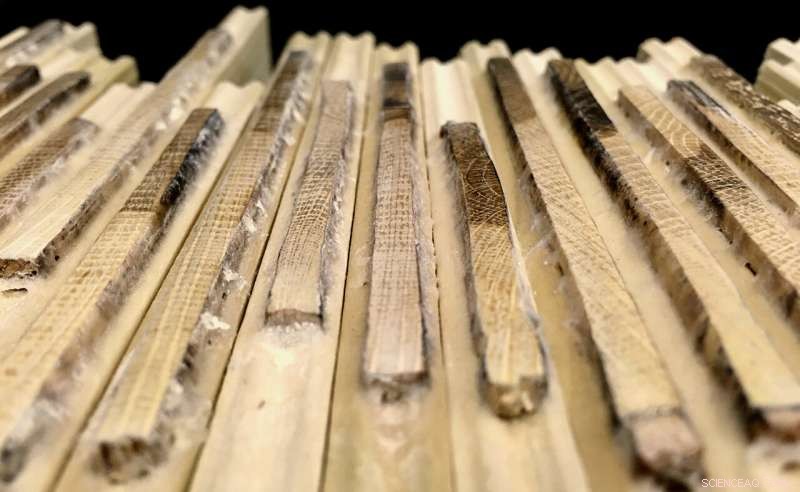
Houten kernen voorbereid voor het meten van ringbreedte. Krediet:Antoine Cabon
Als de groei van bomen bronbeperkt is, wordt deze alleen beperkt door hoeveel fotosynthese de boom kan uitvoeren en zou de groei van bomen relatief eenvoudig te voorspellen zijn in een wiskundig model. Dus stijgende koolstofdioxide in de atmosfeer zou die beperking moeten verlichten en bomen meer laten groeien, toch?
Maar als in plaats daarvan de groei van de bomen beperkt is, kan de boom maar zo snel groeien als zijn cellen zich kunnen delen. Veel factoren kunnen zowel de fotosynthese als de celgroeisnelheid rechtstreeks beïnvloeden, waaronder temperatuur en de beschikbaarheid van water of voedingsstoffen. Dus als bomen zinkbeperkt zijn, moet het simuleren van hun groei rekening houden met de zinkreactie op deze factoren.
The researchers tested that question by comparing the trees' source and sink rates at sites in North America, Europe, Japan and Australia. Measuring carbon sink rates was relatively easy—the researchers just collected samples from trees that contained records of growth. "Extracting wood cores from tree stems and measuring the width of each ring on these cores essentially lets us reconstruct past tree growth," says Antoine Cabon, a postdoctoral scholar in the School of Biological Sciences and lead author of the study.
Measuring carbon sources is tougher, but doable. Source data was measured with 78 eddy covariance towers, 30 feet tall or more, that measure carbon dioxide concentrations and wind speeds in three dimensions at the top of forest canopies, Cabon says. "Based on these measurements and some other calculations," he says, "we can estimate the total forest photosynthesis of a forest stand."
Decoupled
The researchers analyzed the data they collected, looking for evidence that tree growth and photosynthesis were processes that are linked, or coupled. They didn't find it. When photosynthesis increased or decreased, there was not a parallel increase or decrease in tree growth.
"Strong coupling between photosynthesis and tree growth would be expected in the case where tree growth is source limited," Cabon says. "The fact that we mostly observe a decoupling is our principal argument to conclude that tree growth is not source-limited."
Surprisingly, the decoupling was seen in environments across the globe. Cabon says they did expect to see some decoupling in some places, but "we did not expect to see such a widespread pattern."

Detail of a wood core with visible growth rings (more recent rings towards the left) and bark on the right. Credit:Antoine Cabon
The strength of coupling or decoupling between two processes can lie on a spectrum, so the researchers were interested in what conditions led to stronger or weaker decoupling. Fruit-bearing and flowering trees, for example, exhibited different source-sink relationships than conifers. More diversity in a forest increased coupling. Dense, covered leaf canopies decreased it.
Finally, coupling between photosynthesis and growth increased in warm and wet conditions, with the opposite also true:that in cold and dry conditions, trees are more limited by cell growth.
Cabon says that this last finding suggests that the source vs. sink issue depends on the tree's environment and climate. "This means that climate change may reshape the distribution of source and sink limitations of the world forests," he says.
A new way to look forward
The key takeaway is that vegetation models, which use mathematical equations and plant characteristics to estimate future forest growth, may need to be updated. "Virtually all these models assume that tree growth is source limited," Cabon says.
For example, he says, current vegetation models predict that forests will thrive with higher atmospheric carbon dioxide. "The fact that tree growth is often sink limited means that for many forests this may not actually happen."
That has additional implications:forests currently absorb and store about a quarter of our current carbon dioxide emissions. If forest growth slows down, so do forests' ability to take in carbon, and their ability to slow climate change.
 Enkele moleculen vastgelegd op video met een ongekende 1, 600 beelden per seconde
Enkele moleculen vastgelegd op video met een ongekende 1, 600 beelden per seconde Gecombineerde röntgen- en fluorescentiemicroscoop onthult onzichtbare moleculaire details
Gecombineerde röntgen- en fluorescentiemicroscoop onthult onzichtbare moleculaire details Een snel en goedkoop apparaat om virussen op te vangen en te identificeren
Een snel en goedkoop apparaat om virussen op te vangen en te identificeren Nieuw synthetisch polymeer afbreekbaar onder zeer milde zure omstandigheden
Nieuw synthetisch polymeer afbreekbaar onder zeer milde zure omstandigheden Straatkunst redden van graffiti van vandalen
Straatkunst redden van graffiti van vandalen
 Studie voorspelt meer zeespiegelstijging op lange termijn door Groenlands ijs
Studie voorspelt meer zeespiegelstijging op lange termijn door Groenlands ijs Namen van hoge grassen die rond meren groeien
Namen van hoge grassen die rond meren groeien Kans op grote aardbeving in San Andreas vergroot door Ridgecrest temblors, studie suggereert:
Kans op grote aardbeving in San Andreas vergroot door Ridgecrest temblors, studie suggereert: De wind in Californië verandert terwijl gevechten met bosbranden doorgaan
De wind in Californië verandert terwijl gevechten met bosbranden doorgaan Het opruimen van giftige Italiaanse staalfabrieken is een torenhoge taak
Het opruimen van giftige Italiaanse staalfabrieken is een torenhoge taak
Hoofdlijnen
- De voor- en nadelen van grote oren voor vleermuissoorten
- Eiwitarm dieet in het vroege leven verlengt de levensduur van fruitvliegen
- Burgerwetenschap kan de betrokkenheid en het begrip bij niet-gegradueerde biologielessen vergroten
- Moet ik pompoentaart in de koelkast bewaren? Voedselveiligheidsinformatie voor het pompoenseizoen
- Het voorbehandelen van de grond met ethanol beschermt planten tegen droogte
- Wat zijn de belangrijkste functies van microtubules in de cel?
- Vasculaire planten: definitie, classificatie, kenmerken en voorbeelden
- Zon, zee, duurzaamheid:zou je volgende Europese vakantie een groenere kunnen zijn?
- Hoe de bacteriegroei in petrischalen te meten
 Dire toekomst geëtst in het verleden:CO2 op 3 miljoen jaar oude niveaus
Dire toekomst geëtst in het verleden:CO2 op 3 miljoen jaar oude niveaus De uitdaging om koolstof op te vangen
De uitdaging om koolstof op te vangen Hoe microscopisch kleine sint-jakobsschelpen dwalen
Hoe microscopisch kleine sint-jakobsschelpen dwalen Klein, biocompatibele laser zou kunnen functioneren in levende weefsels
Klein, biocompatibele laser zou kunnen functioneren in levende weefsels Een licht schijnen op de vreemde wereld van diwaterstoffosfaatanionen
Een licht schijnen op de vreemde wereld van diwaterstoffosfaatanionen Geblokkeerde beweging in moleculaire motor en rotor
Geblokkeerde beweging in moleculaire motor en rotor Ecologische rol van de spinkrab
Ecologische rol van de spinkrab  Kunstmatige neurale netwerken kunnen het beheer van natuurhistorische collecties stimuleren
Kunstmatige neurale netwerken kunnen het beheer van natuurhistorische collecties stimuleren
- Elektronica
- Biologie
- Zonsverduistering
- Wiskunde
- French | Italian | Spanish | Portuguese | Swedish | German | Dutch | Danish | Norway |

-
Wetenschap © https://nl.scienceaq.com

